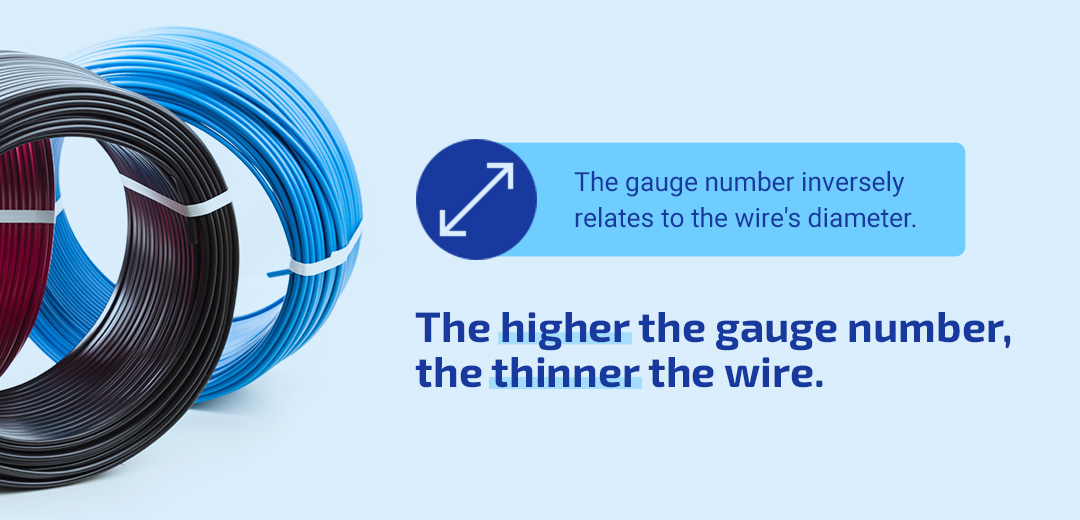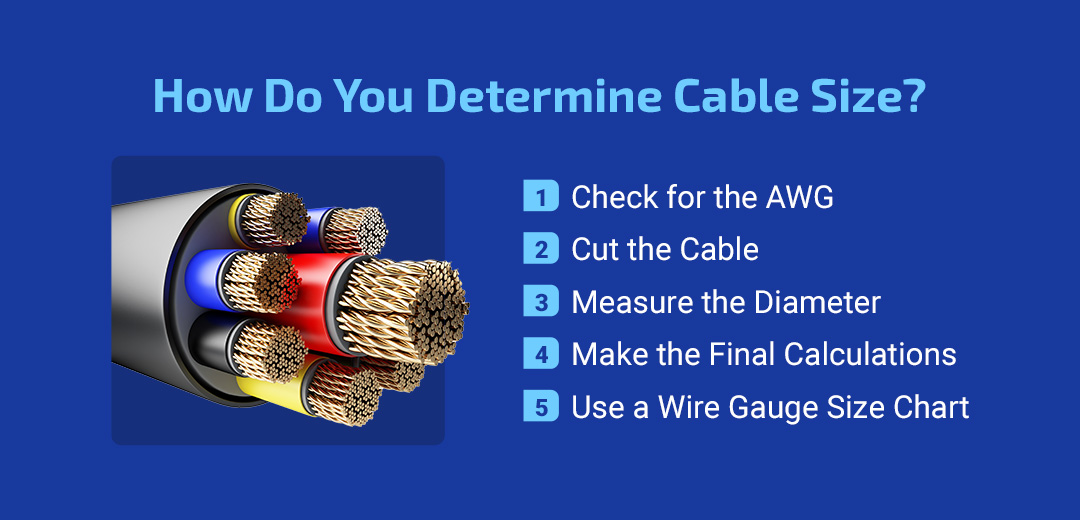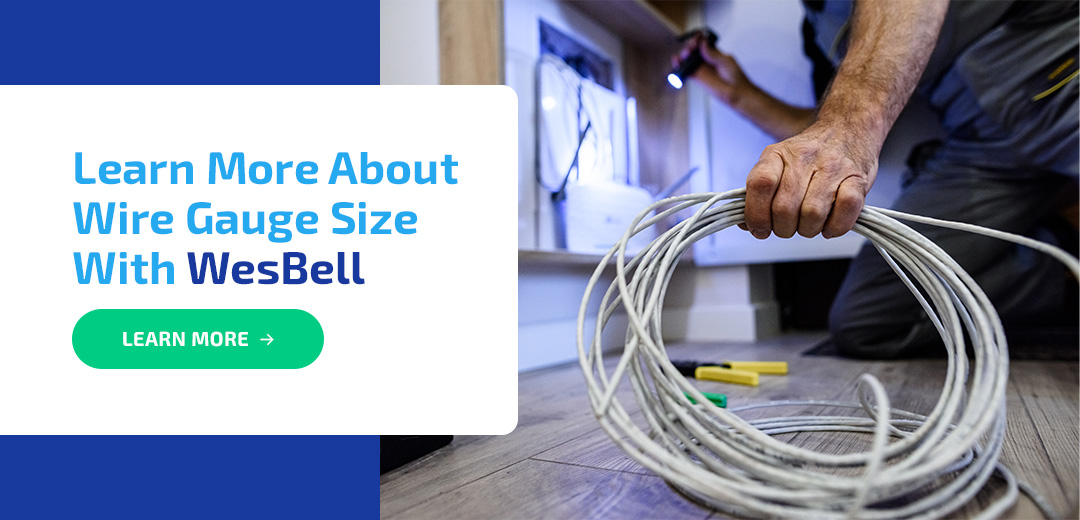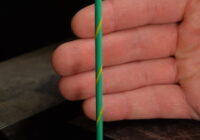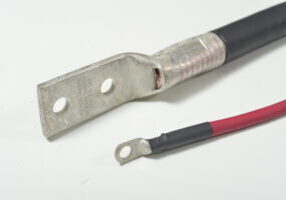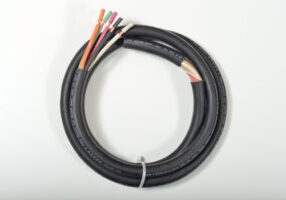
Aug 15, 2024
How to Identify Electric Cable Sizes
Electric wiring runs through properties to power lights, electronics, HVAC systems, and other essentials. To do this, electric systems use cables, which are groups of wires insulated together. They provide electrical currents with a low-resistance path to travel through.
Whether you’re installing a new electrical system or repairing an existing one, you must understand electric cable sizes, or gauges, and what currents they can conduct. You need to use the correct cable size to keep your wiring safe and reduce the risk of fires.
Here is an overview of how to measure cable size for your project.
The Importance of Having Accurate Electric Cable Size
Choosing the correct electric cable size is critical for project safety. Because each cable can conduct different current amounts, you must select the appropriate size. For instance, if you choose a cable that’s too small for a large quantity of current, it wouldn’t be able to carry it safely. In turn, the attempt could cause long-lasting damage to your entire wiring system.
Here are other reasons to select the appropriate cable size.
- Keep your project safe: An electric fire is the most significant risk of an improper cable size. With the correct cable size, you can keep electrical currents running efficiently and could prevent a fire from occurring.
- Abide by safety regulations and codes: All electrical systems should follow the guidelines set in the National Electrical Code, written by the National Fire Protection Association. You must have the correctly sized cables and wires to abide by these rules.
- Save time and money: Choosing the wrong size will likely result in costly replacements later. If the cable fails to transfer the current, it could permanently harm your electrical system, requiring a comprehensive replacement and possibly causing an extended power outage.
There are many variations and considerations for understanding electrical cables. To find the right cable size, start by considering what you will use the wire for and how much current it will handle.
Definition of Wire Gauges
Wire gauges are a measurement system used to determine a wire’s diameter or thickness. Lower numbers represent thicker wires. The gauge number inversely relates to the wire’s diameter — the higher the gauge number, the thinner the wire.
American Wire Gauge is the standard for measuring cable size in North America. The tiniest diameter is 40 AWG, at 0.0031 inches, while 0000 AWG has the biggest possible diameter, at 0.46 inches.
Wire gauges serve different purposes, depending on the voltage or amperage devices require. The more amperage needed, the thicker the wire must be to accommodate the load.
Wire Gauge Considerations
How do you know what gauge wire for a specific application is correct? Consider the following factors when selecting a wire gauge.
- Current carrying capacity: Thicker wires can carry more current without overheating. Ensure the wire gauge you choose can safely handle the expected current load.
- Voltage rating: Make sure the wire gauge is appropriate for the voltage levels in the system to prevent electrical breakdown or insulation failure.
- Temperature rating: Different wire materials have varying temperature ratings. Choose a wire gauge that can withstand the operating temperatures of the environment you will use it in.
- Flexibility: Thinner wires are more flexible but may be unsuitable for high-current applications. Consider the need for flexibility versus carrying capacity when selecting a wire gauge.
- Space constraints: In some cases, you may have limited space available for wiring. Choose a wire gauge that fits within the available space while meeting the electrical requirements.
- Compatibility: Ensure the wire gauge is compatible with connectors, terminals and other components.
How Do Wire Gauges Relate to Other Measurements?
The wire gauge provides valuable information beyond its thickness. It can help you determine various other technical specifications.
- Diameter: Bigger gauge numbers mean thinner wires, and vice versa. The diameter doubles if you decrease size levels — like from 12 to 6.
- Area: A round wire’s cross-sectional area tells you how much space it takes up when you cut through it. If you go down three levels in wire gauge, the area of the wire doubles. As the wire gets thicker, the amount of space inside it for electricity to flow also increases.
- Feet per pound: This measurement tells you how many feet of wire you need to make a pound. It’s a measure of how dense or light the wire is. For example, if you need 10 feet of wire to make a pound, that wire is denser than if you needed 20 feet to make a pound.
- Resistance: Thicker wires have less electricity resistance than thinner wires. If you have two wires made of the same material but different thicknesses, the thicker one will allow electricity to pass through more easily. Also, longer wires have more resistance than shorter ones. As the gauge number goes up, the wire gets thinner and its resistance increases.
Wire Gauge Applications
Different wire gauges are suitable for various uses based on their electrical and physical properties. Lightweight applications typically use thinner gauges, while heavier-duty appliances use thicker gauges.
Here are some typical uses for wire gauges.
- 18 AWG: Low-voltage applications such as lighting, lamp cords, thermostats and doorbells
- 16 AWG: Mostly light-duty extension cords
- 14 AWG: Lighting fixtures, devices, circuits and bedroom or office outlets
- 12 AWG: Air conditioning units and residential outlets, like kitchens and bathrooms
- 10 AWG: Small ovens, washing machines, dryers and water heaters
- 8 AWG: Larger ovens and air conditioners
- 6 AWG: Electric ovens, car chargers and some kitchen cooktops
- 4 AWG and lower: Single conductors are for larger loads like electric furnaces, heaters and hot tubs
How Do You Determine Cable Size?
Whether you’re shopping for a particular cable or checking the ones in your project for a renovation, you must find its size. The gauge number indicates the diameter and current capacity of the cable. Again, the diameter and gauge number have an inverse relationship. In other words, a high gauge number means the wire’s diameter is smaller.
Here’s more information on how to identify electric cable size.
1. Check for the AWG
The easiest way to determine cable size is by finding the AWG on your cable. Most cables have the AWG printed on the insulation, typically indicated with the number and label “AWG.” If you can find the gauge size on the cable, you can use this information to proceed with your project. However, some cables don’t have the AWG printed on the outside, and you have to calculate a bit further to get this number. Continue to the next steps if you cannot see the AWG size on your cable.
2. Cut the Cable
To manually determine your cable’s AWG, measure its diameter by cutting it. If the electricity isn’t off yet, turn it off before continuing.
You can use wire cutters to cut into the cable. Make the cut perpendicular to the cable’s direction or run.
3. Measure the Diameter
Once you have cut your cable, you can get the diameter by measuring the cross-section of your cut in inches. Measure from one side to the other side in a straight line. Be sure to measure only the wire — don’t include the insulation in your measurements.
4. Make the Final Calculations
Lastly, use the diameter measurement to make your last calculations. The simplest calculation for determining AWG uses the minimum and maximum possible AWG measurements, 0000 AWG and 40 AWG. The diameter of the largest size is 0.46 inches, while the diameter of the smallest size is 0.0031 inches. Each AWG measurement between comes from a logarithmic step. You will use all these components to calculate your cable’s AWG.
If possible, use a calculator for the last equations. Here are the steps for making your final calculations:
- Divide the diameter of your wire in inches by 0.46 inches (the maximum diameter).
- With the resulting number, press the “log” button on your calculator.
- Next, divide the prior answer by -0.050305.
- Finally, subtract three from the preceding answer.
The last number of your calculations will be your cable’s AWG.
Alternatively, you can take the cable measurement using a cable measurement tool. These are usually rings or cards with various cutouts where you can slide the cable in to find which size it is, saving you from doing the math.
5. Use a Wire Gauge Size Chart
A reference chart is another easy way to determine the cable size you need. A wire gauge chart gives a simple and easy-to-understand guide on wire sizes and their corresponding measurements. AWG standards range from 0000 (4/0) to 40, though most household and commercial wiring demands range between 2 and 14 AWG.
You can refer to this information to determine the appropriate wire gauge for your specific application.
- 14 AWG: Diameter = 0.06 inch or 1.63 mm
- 12 AWG: Diameter = 0.08 inch or 2.05 mm
- 10 AWG: Diameter = 0.10 inch or 2.59 mm
- 8 AWG: Diameter = 0.13 inch or 3.26 mm
- 6 AWG: Diameter = 0.16 inch or 4.11 mm
- 4 AWG: Diameter = 0.20 inch or 5.19 mm
- 2 AWG: Diameter = 0.26 inch or 6.54 mm
What Are the Standard Cable Sizes?
Once you identify the cable’s wire gauge size, you might wonder what to do next. It’s good practice to understand cable sizes and their typical uses. That way, when you find a cable during a project or while online browsing, you can know the correct environment to use it in.
These are the most prevalent cable sizes for indoor uses and their typical uses.
- 10-gauge wire: These typically have orange insulation and are excellent for indoor applications like outlets.
- 12-gauge wire: Usually indicated by a yellow color, these wires are also for indoor uses, like in ceiling fans.
- 14-gauge wire: These wires are common in indoor light fixtures and have white insulation.
Learn More About Wire Gauge Size With WesBell
WesBell Electronics has provided high-quality electrical wire and cable solutions for decades. We set ourselves apart from competitors with an extensive catalog of wires and cables and dedicated customer service. We pride ourselves on our premier services, and we’ll work hard to find the best solution for our customers.
If you want to install new wiring or find the best size, browse our electrical cable offerings today. Or, contact us with any questions. We’re happy to help you through the entire process and find the best solution for your project.

